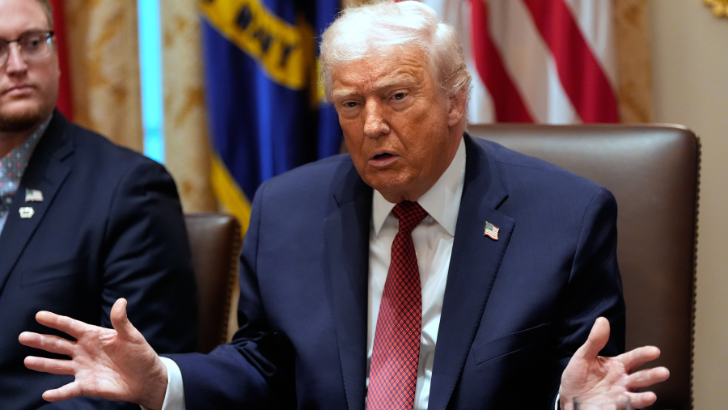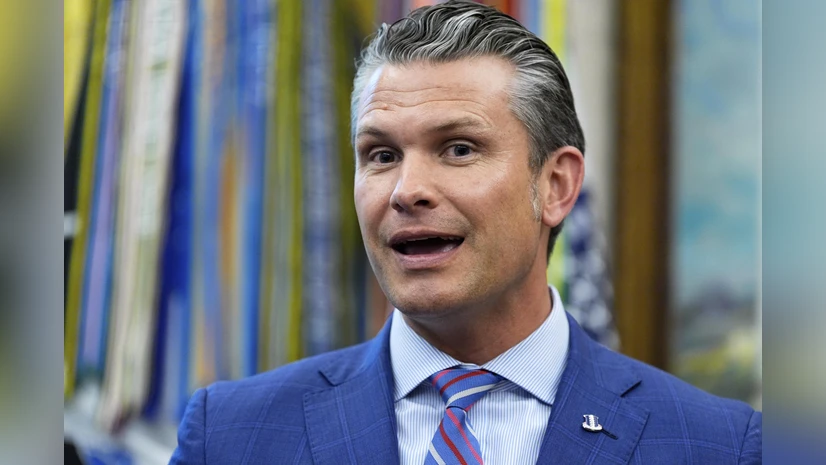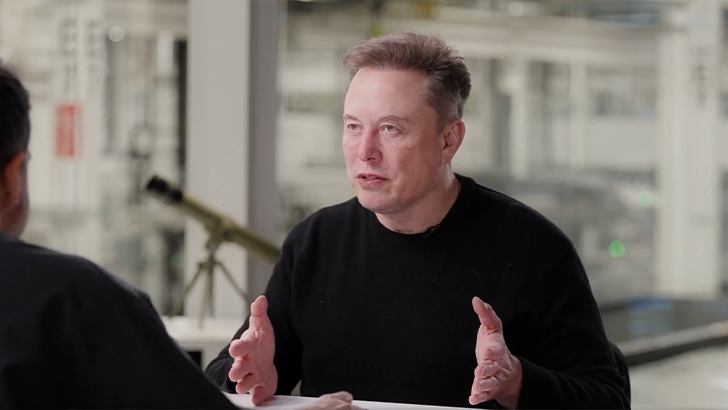Cardinals meet at Vatican to choose date for Pope Francis' funeral
Cardinals gathered at the Vatican to begin preparations for Pope Francis' funeral and burial, with decisions on his public viewing and the election of his successor. The funeral will take place between 25-27 April.
PTI
-
Francis died Monday at age 88 after suffering a stroke that put him in a coma and led his heart to fail.
Vatican City, 22 April
Cardinals gathered Tuesday at the Vatican to begin scheduling Pope Francis' funeral and burial, planning the conclave to elect his successor and making other decisions about running the Catholic Church as world leaders and ordinary faithful grieved the death of history's first Latin American pope.
Most immediately, they will determine when his body can be moved into St. Peter's Basilica for public viewing. The first images of Francis were released Tuesday, showing him in the wooden casket, in red vestments and his bishop's miter, with the Vatican secretary of state praying over him in the chapel of the Domus Santa Marta hotel where he lived.
Francis died Monday at age 88 after suffering a stroke that put him in a coma and led his heart to fail. He had been recovering in his apartment after being hospitalized for five weeks with pneumonia. He made his last public appearance Sunday, delivering an Easter blessing and making what would be his final greeting to followers from his popemobile, looping around St. Peter's Square.
In retrospect, his Easter appearance from the same loggia where he was introduced to the world as the first Latin American pope on March 13, 2013, was a perfect bookend to a 12-year papacy that sought to shake up the church and return it to its Gospel-mandated mission of caring for the poorest.
The Vatican announced that the first meeting of the Congregation of Cardinals, the gathering of the cardinals currently in Rome, would begin Tuesday at 9 am in the Vatican's synod hall.
They could decide to allow public viewing of Francis as soon as Wednesday morning in St. Peter's Basilica. Under norms approved by Francis last year, the funeral and burial must occur between Friday and Sunday.
In his final will, Francis confirmed he would be buried at St. Mary Major basilica, which is outside the Vatican and home to his favourite icon of the Virgin Mary. After every foreign trip, Francis would go to the basilica to pray before the Byzantine-style painting that features an image of Mary, draped in a blue robe, holding the infant Jesus, who in turn holds a jewelled golden book.
Francis stopped by the basilica on his way home from the Gemelli hospital on March 23, after his 38-day hospital stay, to deliver flowers to be placed before the icon.
He returned April 12 to pray before the Madonna for the last time.
The world reacts
Bells tolled in chapels, churches and cathedrals around the world and flags flew at half staff in Italy, India, Taiwan and the US after Francis' death was announced by the Vatican camerlengo. Soccer matches in Italy and Argentina were suspended in honour of the Argentine pope who was a lifelong fan of the San Lorenzo soccer club.
World leaders praised Francis for his moral leadership and compassion, while ordinary faithful remembered his simplicity and humanity.
“Like every Argentine, I think he was a rebel,” said 23-year-old Catalina Favaro, who had come to pay her respects in the Buenos Aires church where Francis discovered his priestly vocation. “He may have been contradictory, but that was nice, too.”
In East Timor, where Francis' final outdoor Mass drew nearly half of the population last September, President Jose Ramos-Horta praised Francis' courage. “Papa Francisco was a brave man who was not afraid to speak out against the rulers of the world who seek war, but do not want to seek peace,” Ramos-Horta said.
“He challenged the powerful to act with justice, called nations to welcome the stranger, and reminded us that our common home — this Earth — is a gift we must protect for future generations,” said Nigeria's President Bola Tinubu, who is Muslim. Nigeria is Africa's most populous country and has around 30 million Catholics, representing about 14% of the total population.
Viewing the pope's coffin
The pope's formal apartments in the Apostolic Palace were sealed Monday evening, following a centuries-old ritual. Cardinal Kevin Farrell, who as camerlengo had the task of announcing the death and confirming it once the cause was determined, presided over the ritual.
Francis chose not to live in the palace, though, but in the Domus Santa Marta hotel on the other side of Vatican City. He died there and his body was transferred to the hotel chapel in the lobby, where a private viewing was being held Tuesday for Vatican officials and members of the pontifical household.
In changes made by Francis last year, his body was not placed in three wooden coffins, as it had been for previous popes. Rather, Francis was placed in a simplified wooden coffin with a zinc coffin inside.
Once in St. Peter's, his coffin will not be put on an elevated bier, but will just be be placed simply facing the pews, with the Pasqual candle nearby.
Funeral and burial
The burial must take place between the fourth and sixth day after his death, meaning a likely date is Saturday or Sunday. US President Donald Trump has announced he and first lady Melania Trump plan to attend. Argentine President Javier Milei is also expected.
The funeral will be presided over by the dean of the College of Cardinals or, if that is not possible, by the vice dean or another senior cardinal. The current dean is Italian Cardinal Giovanni Battista Re, 91. The vice dean is Argentine Cardinal Leonardo Sandri, 81.
Re and Farrell, the camerlengo, will have key roles in the coming days as they summon the cardinals and prepare for the conclave to elect Francis' successor.
Choosing the next pope
After the funeral, there are nine days of official mourning, known as the “novendiali.”
During this period, cardinals arrive in Rome to participate in meetings before the conclave to elect the next pope.
To give everyone time to assemble, the conclave must begin 15-20 days after the “sede vacante” — the “vacant See” — is declared, although it can start sooner if the cardinals agree.
Once the conclave begins, cardinals vote in secret sessions. After voting sessions, the ballots are burned in a special stove. Black smoke indicates that no pope has been elected, while white smoke indicates that the cardinals have chosen the next head of the Catholic Church.
The one who has secured two-thirds of the votes wins. If he accepts, his election is announced by a cardinal from the loggia of St. Peter's Basilica who announces “Habemus Papam,” Latin for “We have a pope.”
Leave a Reply
Your email address will not be published. Required fields are marked *








.png)

.png)
.png)
.png)


.png)
.png)

.png)

